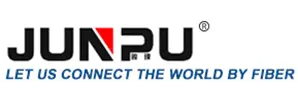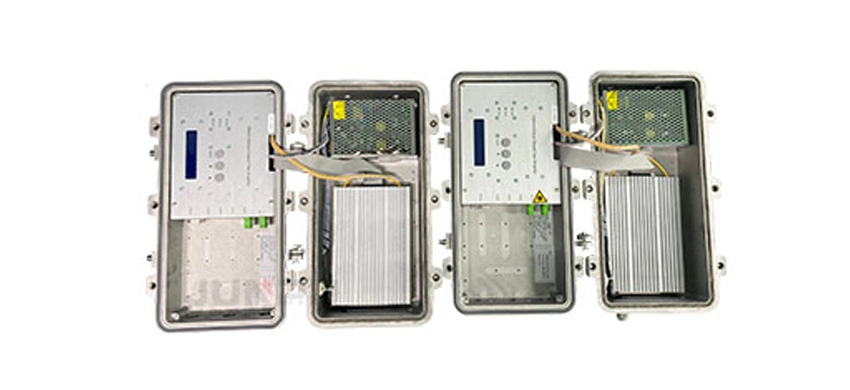
-
Home
-
Products
- Solution
- WHY JUNPU
- Services
- Resources
- News
- Contact Us

Long-distance optical communication drives global connectivity. It supports internet, telecom, and data transfer across continents. Signals in optical fibers weaken over distance due to attenuation. Erbium-Doped Fiber Amplifiers (EDFAs) solve this issue. They boost optical signals efficiently, making them ideal for long-haul networks. This article explores why EDFAs are preferred, which fibers work best with them, how they compare to repeaters, and their role in optical communication.
An EDFA is a device that amplifies optical signals in fiber optic systems. It uses erbium-doped fiber to boost light in the 1550 nm range, perfect for telecom. EDFAs operate in the C-band (1530–1565 nm) and L-band (1565–1600 nm), where fiber loss is minimal. They amplify signals directly without converting them to electrical form. This keeps data fast and reliable. Developed in 1987, EDFA became essential for long-distance networks by the 1990s.
EDFAs amplify signals without electrical conversion. This avoids delays and maintains bandwidth. They offer high gain, up to 40 dB, boosting weak signals over long distances. EDFAs work with Wavelength Division Multiplexing (WDM), amplifying multiple signals at once. This increases network capacity. Their low noise (4–6 dB) ensures signal clarity over thousands of kilometers. EDFAs are used in undersea cables and terrestrial networks, making them vital for global communication.
Single-mode fiber (SMF) is preferred for long-distance communication. It has a small core, allowing one light path, which reduces dispersion. This ensures signals travel far with minimal distortion. SMF works best in the 1550 nm range, matching the EDFA’s operating window. Its low attenuation (0.2 dB/km) supports spans up to 100 km without amplification. EDFAs pair perfectly with SMF, boosting signals in long-haul systems like submarine cables. Multimode fibers, with higher dispersion, are less suitable for long distances.
EDFAs and repeaters both boost signals, but they differ in method and efficiency. EDFAs amplify optical signals directly using erbium-doped fiber and a pump laser. They operate in the 1550 nm range with high gain and low noise. Repeaters convert optical signals to electrical, amplify them, and then convert back to optical. This process is slower and less efficient. EDFAs support WDM, amplifying multiple wavelengths at once, while repeaters typically handle one channel. EDFAs are compact and cost-effective for long-haul networks, while repeaters are older technology, used in legacy systems.
EDFAs are critical in optical fiber communication. They amplify signals in three roles: booster, in-line, and pre-amplifier. Booster EDFAs increase signal power at the transmitter. In-line EDFAs restore signal strength mid-link. Pre-amplifiers boost weak signals before the receiver. EDFAs support Dense Wavelength Division Multiplexing (DWDM), amplifying multiple channels for high-capacity networks. They are used in telecom, cable TV, and data centers. Their ability to maintain signal quality over long distances, like in submarine cables, makes them indispensable for global networks.
EDFAs offer high gain, amplifying signals up to 40 dB. Their low noise figure (4–6 dB) preserves signal quality. They operate in the 1550 nm range, aligning with the lowest-loss window of single-mode fibers. EDFAs have a wide bandwidth (20–40 nm), supporting WDM systems. Their coupling efficiency with fibers is high, with losses below 0.1 dB. Unlike repeaters, EDFAs don’t need optical-to-electrical conversion, reducing complexity and cost. These features make EDFAs ideal for long-haul systems, including transoceanic cables and metro networks.

EDFAs power today’s global networks. They enable communication over thousands of kilometers, supporting internet and cloud services. In DWDM systems, EDFAs amplify multiple wavelengths, addressing issues like signal loss and dispersion. They are used in smart cities, IoT, and industrial networks. For example, in submarine cables, EDFAs ensure reliable data transfer across oceans. They also support high-speed technologies like 50G PON, integrating services like GPON and XGS-PON. EDFAs balance cost, efficiency, and performance, making them a cornerstone of modern optical communication.
 Call us on:
Call us on:  Email Us:
Email Us:  Wanhua Science and Technology Park, No. 528, Shunfeng Road, Donghu Street, Linping District, Hangzhou City, Zhejiang Province
Wanhua Science and Technology Park, No. 528, Shunfeng Road, Donghu Street, Linping District, Hangzhou City, Zhejiang Province